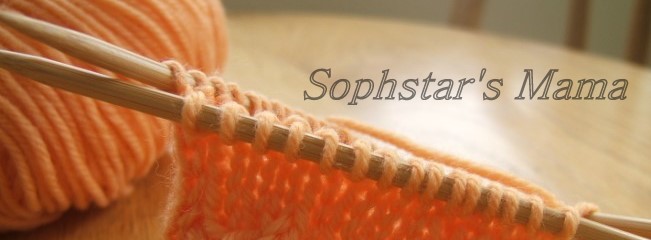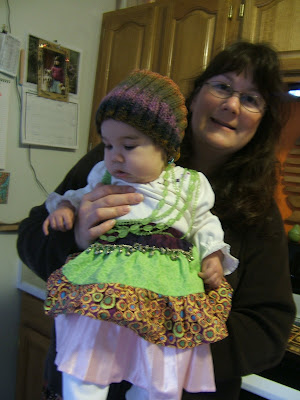Ok, some of you may read this post title and yawn. I mean, everyone knows cloth diapers are better for the environment and everything, right?
Maybe. But do you know just how bad disposable diapers are for the environment? Do you know how bad disposable diapers are for your baby? Here, I'll tell you:
- Disposable diapers use 82,000 tons (TONS!) of plastic and 1.3 million tons of wood pulp every year.
- Disposable diapers DO NOT decompose in landfills - not even the so-called biodegradable ones. Anaerobic environment=no decomposition.
- American babies use 14,400,000 disposable diapers every year on average. Where do they go? Landfills. What are we running out of space in nation-wide? Landfills.
Here's another thing. Did you know that it is illegal to throw away a poopy diaper? Laws in all 50 states prohibit human excrement from being disposed of in landfills. Obviously these laws aren't enforced at all, but that's another story.
Disposable diapers are bad for your baby, too, not just the environment. You know that "absorbent gel core" in your 'sposies? Do you know what it's made of? Long story short, it's made of toxic materials that could kill or seriously harm your baby if ingested.
If your baby is a little boy, this opens another can of worms that might not be your biggest concern right now, but that may concern him (or his wife!) later in life. Studies have found that wearing disposable diapers creates a warmer-than-normal temperature in the diaper area, and in little boys who wear diapers all of the time, their little spermies pretty much get fried. Men who wore disposable diapers as babies tend to have lower sperm counts and have more problems with infertility than their peers who wore cloth diapers. But hey, with the world population as high as it is, maybe that's not such a bad thing??
Alright, enough of the doom and gloom, on to the fun stuff!
The best reason to use cloth diapers? They're just so gosh darn cute. How could you resist?
Let's start with the basics: prefolds and covers. First thing you need to know about these is that you absolutely don't need to pin your diapers! Just stick the darn things in the cover and velcro. Easy. Or if you really want to fasten the diaper itself to your baby, use a Snappi.

This is a prefold. You fold it in thirds and stick it inside a waterproof diaper cover. They come in three sizes, but unless you have a preemie you only need to buy the larger two sizes, "infant" for 7-15lbs and "premium" for larger than 15lbs. I actually know some people who only used "premium" sized prefolds... it works, just bulky on a newborn. These cost $1.00-$2.00 each.

This is my favorite brand of diaper cover,
Bummis Super Whisper Wrap. These come in 3 or 4 sizes I think, but you don't really need a lot of diaper covers to make your system work. In my experience these ones have awesome sizing with a lot of overlap. Someone gave me a couple size larges, and they fit my skinny little girl just fine, and will definitely fit her until she's potty trained. They aren't bulky and the legs fit well, so even if the cover is big, it squishes down under clothes and is tight enough that you won't get any leaks. These run about $12 each.
There are TONS of different styles, shapes, materials, colors, patterns, etc. of diaper covers out there. I'm digging the natural fibers right now, especially wool longies - but that's another post.
Alright, now the fancy stuff. Pocket diapers and All-In-Ones are perfect diapers for people like grandparents, daddies, babysitters, day-care providers.... anyone who is opposed to cloth diapers because "they're hard," or "I just don't want to bother with them."
Both pockets and all-in-ones go on and off in one piece, just like a disposable, so people really have no excuse if they're presented with these.
Check it out.

This is a
Fuzzi Bunz. It is
a pocket diaper, which means that it has an outer layer that is waterproof and an inner layer made of fleece (to wick moisture away from your baby's skin), and a space in between which is where you "stuff" the diaper with whatever you want. They come with a microfiber insert, so you can use that obviously, but you can also stuff it with a prefold, or use both, or any combination of "stuffing" that gives you the exact right level of absorbency. These come in different sizes, but as with the Bummis above, one size has a pretty lenient size range. They have snaps, which some people like and some people don't, but one thing about snaps that everyone likes is that they stay nicer longer. These diapers can easily be used for more than one baby without showing obvious signs of wear. I think these run around $17-18 each.

This is a
bumGenius diaper. It's the same idea as the Fuzzi Bunz, except for a couple things. Number one, this is a
one-sized diaper. Yep, you heard me. It has snaps on the rise that allow it to fit a baby anywhere from 7-35lbs. Sophie has been wearing hers since she was a newborn and they still fit! Buying a one-sized diaper is obviously a plus in that you only have to buy one set, not multiple sizes. But one drawback that I have started to notice in mine is that, well, they get a lot of wear. Sophie's "old" bumGenius 2.0's have been in use on her little butt for 16 months now, and the elastic is starting to loosen in the leg gussets. But good news is in the "new" bumGenius 3.0's (which are the ones for sale now) aren't showing the wear that I see in the old ones. BumGenius' have velcro instead of snaps, which could be easier I guess, but they do pill up a little over time and not look brand new anymore. It's a matter of personal preference. These are around $19 each.
All-in-one diapers pretty much look the same as pockets, so I won't bother putting a picture of one up. The difference between an aio and a pocket diaper is that on the pocket, you stuff it with an absorbent insert, and then take the insert out before washing. With an all-in-one, the stuffing is sewn right in and it really does function just like a disposable (except for the washing part of course). They are the easiest cloth diaper out there. The only downsides are that they are also the most expensive type of cloth diaper out there, and they take a long time to dry.
Again, there are just TONS of different diapers out there. Some are more expensive than others, some are cuter than others :), and some work better on chubby babies or on skinny babies, etc. etc. I am just bringing you a small sampling here.
What about money?
Cloth diapers do have a higher start-up cost, but by the time your baby is potty trained you will have gotten more than your money's worth out of them. Consider these numbers:
- The average baby uses 5,000 diapers before they are potty-trained (but if you use cloth that number might be less, because babies potty train faster if they are wearing cloth diapers).
- Disposable diapers cost on average $0.28 each. $0.28 x 5,000 = $1,400 (that's a lot of money to spend on trash!)
- The average cloth-diapering family will need about 6 dozen diapers. For a prefold-and-covers system, that would run about $300 total. For a pockets or aio's system it would be more, maybe around $500-$700. Sound like a better price tag?
Keep in mind that most of your diapers will be in good enough shape to use for your next baby too, so their cost could realistically be cut in half.
Here are a couple of other products that will make your cloth-diapering home run smoothly:
Cloth wipes (don't spend a lot of money on these, just search on eBay or make your own), a diaper pail, and diaper pail liners. The small diaper totes (pictured) also work great for in the diaper bag. Then you just need a squirt bottle full of water (with some mild soap and/or essential oils if you want) to keep next to your stack of wipes, and you're set!
Alright.
One last issue here: Laundry.
Yes. It's true. In order for the diapers to be worn again, they must first get clean.
Seriously people, it's not that bad. I've been doing it 3 times a week for a year and four months, and it really only takes a couple minutes. You don't need any special products, just some good unscented laundry detergent and a washing machine. I wash my diapers twice, once on cold and once on hot, and then do an extra rinse cycle to make sure all the soap residue is gone (if your diapers are smelly, the problem is that you are using too much soap. Leftover soap residue can make your diapers less absorbent and actually not as clean, funny as it seems).
To sum up:
Disposable diapers are bad.
Cloth diapers are good, cute, easy, and FUN!
Now go forth and diaper with pride!
-------------------------------------------------------------------------------------------------
Sources:


.jpg)













